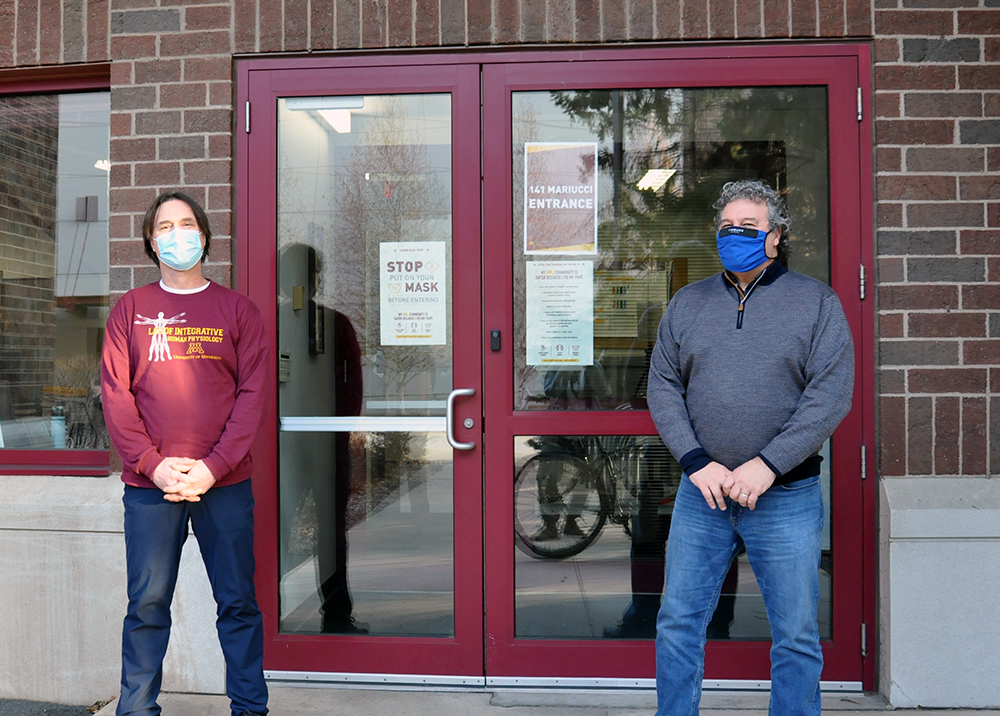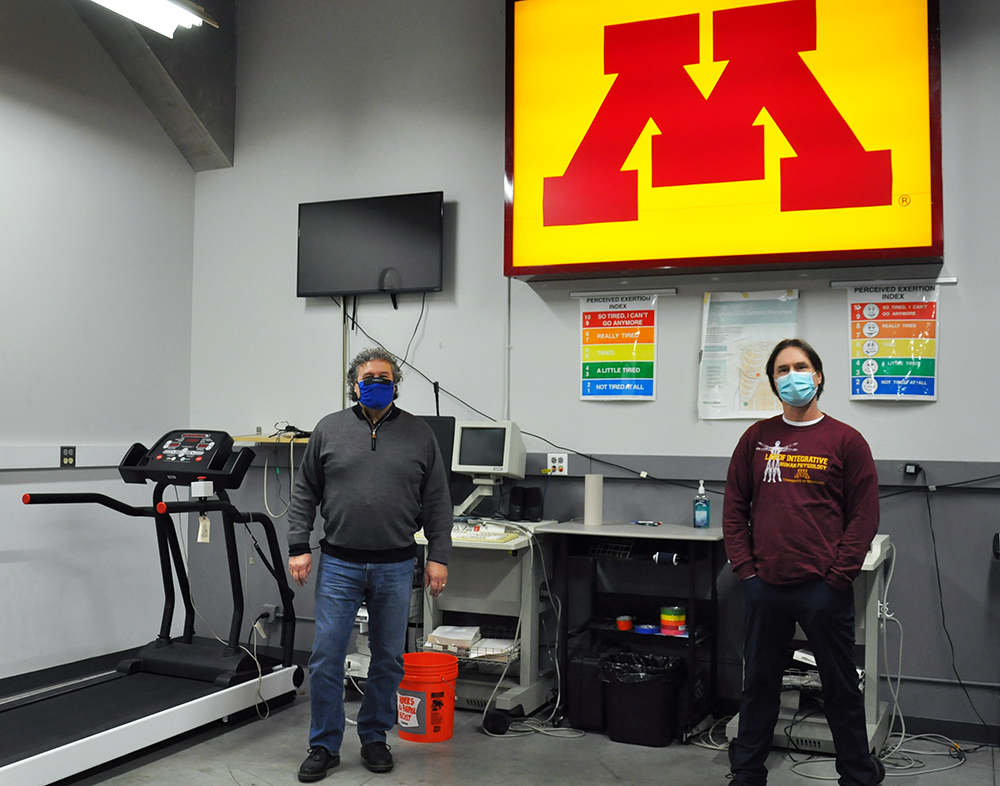
The Laboratory of Integrative Human Physiology (LIHP) is a research laboratory and the Human Performance Teaching Laboratory (HPTL) is a teaching laboratory directed by Don Dengel, PhD, a professor in the School of Kinesiology. The LIHP and HPTL are both housed in Mariucci Arena. Recently, the two laboratories had to make major adjustments in the research and teaching processes being used. When the COVID-19 pandemic first hit the United States in March, the lab was in full swing, conducting research projects and actively used by both graduate and undergraduate level students.
“Before the pandemic hit, our lab was involved in many different research projects,” said Nick Evanoff, MS, the Laboratory Manager and a PhD student at the School of Kinesiology. “We were conducting body composition scans regularly, working closely with the U of M sports teams and Medical School, and using our research data to teach exercise physiology lab courses.”
Almost all of LIHP’s research is based on human studies, and requires people to come into the lab for tests and measurements. When the pandemic effectively halted all ongoing research, Dengel and Evanoff put their heads together to try to make the best of the situation.
“We knew that the dynamics of our work were going to change, perhaps indefinitely,” Dengel said. “We survived through the spring semester, but right after that we got to work on trying to adapt quickly.”

Dengel and Evanoff focused on the teaching component of the HPTL first, considering guidelines from the Centers for Disease Control (CDC), World Health Organization (WHO), and the Institutional Review Board (IRB). With this information in mind, they completely retrofitted their laboratory space in order to safely accommodate their students and research.
“We probably invested $25,000 into the lab update,” Dengel said. “We purchased additional computers, microscopes, lab equipment, hand washing stations, etc. We even had the lab re-wired to accommodate the new set-up and additional workstations. We knew we needed to move fast and be nimble if we wanted to keep our research moving.”
Not only did Dengel and Evanoff have to re-think and re-organize their entire lab space, but they also needed to make sure that their processes and equipment were as safe as possible. This meant working with the manufacturers of their testing equipment.
“After we got a handle on the education piece, we moved onto the LIHP and the research space,” Dengel said. “How do you scan people as cleanly as possible from a COVID standpoint? A lot of labs use respiratory equipment; how do you do that safely? We worked with our vendors and asked a lot of questions. We wanted to make it as safe as possible for every person involved.”
Dengel and Evanoff both noted that there are many people involved in the research process, and how difficult it was to consider all of the moving pieces and parts that go into a test. Their new safety measures needed to take into account everything from the patient and the person administering the test, to the entrances and exits and the equipment used.
The thought, work, and time they invested in the process of getting the LIHP back up and running inspired Dengel and Evanoff to publish a peer-reviewed paper, “Re-Opening Exercise Science Laboratories and Testing During the COVID-19 Endemic Phase,” a resource that would help set the standard for other exercise science labs trying to continue their research.
“Early on, there were absolutely no guides,” Evanoff said. “We looked everywhere for an industry standard or best practice for re-opening and we couldn’t find it, so we made our own.”
“Nick and I put in all of this work,” Dengel said. “We wanted other people to have access to it. It doesn’t make sense for labs everywhere to have to reinvent the wheel. Our goal was to help other people move through this.”
Not only did their publication help other labs, it also helped the LIHP get their University-mandated return-to-research “sunrise” plan approved.
“We were often having to answer the same questions over and over again when trying to get approval on our sunrise plan,” Dengel said. “It really helped to be able to hold that published paper up and say, ‘Yes, we already thought of that, and we published our solution.’”
Despite the many challenges of keeping the LIHP up and running, both Dengel and Evanoff said there have been many positive take-aways. The students, in particular, continue to be an inspiration to both instructors. This includes both the undergraduate students and the graduate students who are Teaching Assistants (TAs) in the lab.
“It was really inspiring to watch our TAs adjust on the fly and figure out how to teach in this new environment,” Evanoff said. “I feel like this experience really helped those students who want to become faculty in the future. They’ve had to be creative, develop their teaching skills, and be quick on their feet.”
Evanoff and Dengel both mentioned the importance of the positive, team environment in the lab. Their regular lab meetings are full of ideas and discussion that all parties feel comfortable participating in. Some of the ideas that have come from the adjustments made over the last semester and a half will continue to be utilized in the future, even after the pandemic passes.
“It was nice to hear from the students that they want to be in the lab,” Dengel said. “It’s easy to think that students don’t like the lab because it’s hard or it takes more time, but we’ve heard again and again from our undergraduate students that they want to be here, in-person, and getting hands-on experience.”
As the HPTL and LIHP team members prepare for another uncertain semester this spring, they feel more ready to take on the unknown.
“I think it’s really important to note that we’ve got such a great support team,” Evanoff said. “From the faculty, to the School staff team, to the Graduate TAs, to the students. We couldn’t have done any of this without each of those people.”
We know the HPTL, LIHP and School of Kinesiology teams will continue to work hard and creatively to keep the research and learning alive for the Spring semester!



